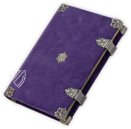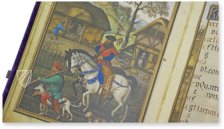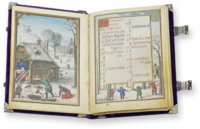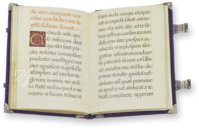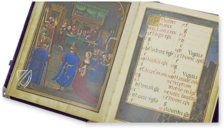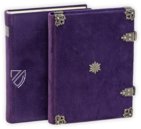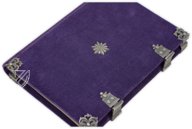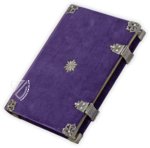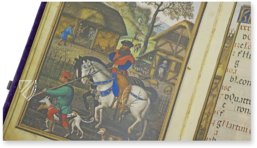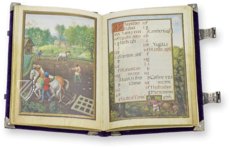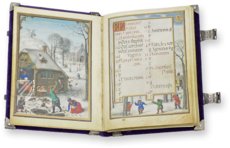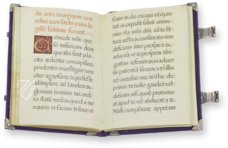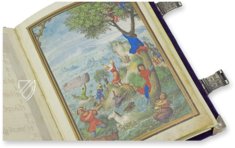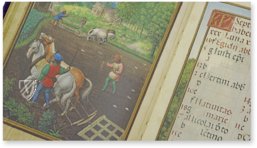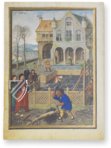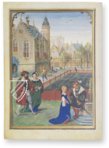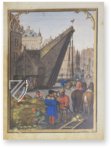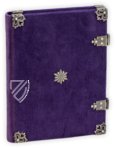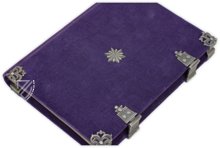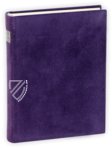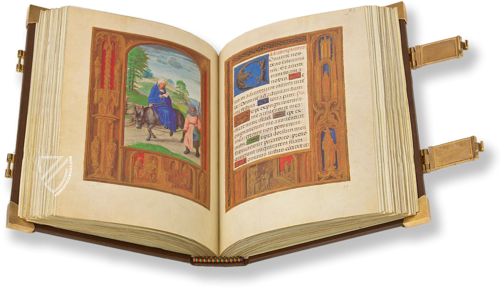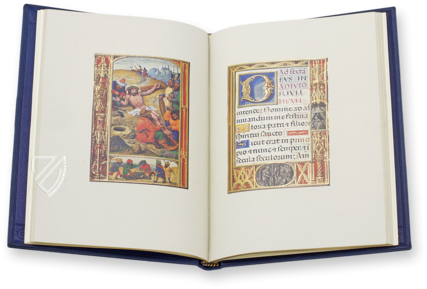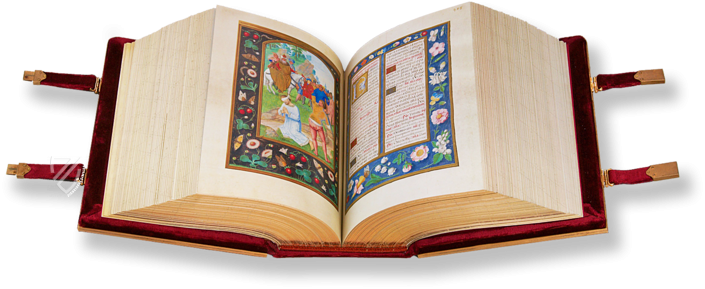Simon Bening's Flemish Calendar
(1,000€ - 3,000€)
Simon Bening is considered by art-historians to be the most gifted master of Flemish illumination during the Middle Ages. His Flemish Calendar was made between 1520 and 1525 in the Belgian city of Bruges. With this calendar he created a complete upheaval of the dominant landscape-painting of his time. Never before had nature and landscape been devoted to such an important role in book illumination as Bening had given them. His painting drove change in the cultural understanding of his contemporaries and served as an example to great masters such as Pieter Bruegel.
Simon Bening's Flemish Calendar
Medieval devotional books traditionally opened with a calendars, which contained the feasts and holidays of the church year. The Flemish Calendar by the master of book art Simon Bening is therefore thought to originally have been thus employed in a book of hours. The astonishingly detailed paintings, which present themselves in this fragmentary work, point to the possibility that the calendar was published as a standalone manuscript. In this work, several pages were devoted to calendar miniatures for the first time in the history of handwritten book art. Two miniatures for each month illustrate the activities typical for that month as well as displaying richly detailed landscapes in the course of the four seasons. Bening not only revolutionized calendar-illumination with his work: he was simultaneously the inventor of a new kind of landscape painting, as it was later practiced by great Dutch artists such as Pieter Bruegel.
A Luminary of Book Art
Simon Bening, son of the miniaturist Alexander Bening, was born in the Belgian city of Bruges ca. 1483. He learned the craft of illumination in the workshop of his father. During his education he became familiar with the works of great book-artists like Gerard Horenbout, with whom he would produce the greatest illuminated manuscripts of the Netherlands a few years later. Bening began to work independently from 1500 on and in was accepted into the illuminators’ guild of Bruges in 1508. That was a privilege that was awarded to only the most gifted masters of the discipline. By 1525 at the latest, Simon Bening was the undisputed star of the illumination scene in the Late Middle Ages. The Portuguese diplomat and humanist Damião de Góis named him “the best master of book illustration in all of Europe”. His handmade, unique illuminated manuscripts are kept safe in the most-renowned museums worldwide. Simon Bening’s particular achievement lies above all else in his never-before-seen method of representation of people and landscapes.
A Revolutionary Pictorial Program
Simon Bening was the first book-painter who lent as much significance to his calendar miniatures as he did to his portraits and devotional pictures. He treated his miniatures as individual scenes, in which he desired to create an exact likeness of the nature surrounding him. He systematically examined landscapes, and familiarized himself as exactly as possible with specific topographical conditions. His poetic depictions show sentimental, atmospheric portrayals of flowering meadows, fields, and farmlands as well dark, mysterious woods. Never before had landscape-painting had so much importance attributed to it.
Illumination with Exemplary Character
The charming series of images of calendar motifs present the most varied characteristic activities and zodiac symbols that are associated with the respective month. For the most part, rural activities such as the cultivation of fields and farmlands are depicted. Similarly, the miniatures show the month’s amusements and major cultural events. The leisure activities of upper-class of society receive comparatively more space in Bening’s calendar than does the year-round fieldwork. A bustling and harmoniously closed society manifests itself picture for picture. Lumberjacks in open nature, farmers in snowy fields, as well as people who warm themselves by the fire in a nearby inner-space – this miniature, for example, illustrates the month of January. Other motifs, such as courtship, were implemented by Bening into scenic illumination. One sees couples in a garden, on a romantic boat trip, or dancing at a ball in an elegant Flemish house. The atmospherically-thick pictures in subtle colors were never surpassed by another illuminator of the Middle Ages.
Codicology
- Alternative Titles
- Simon Benings Flämischer Kalender
- Size / Format
- 60 pages / 14.0 × 10.4 cm
- Origin
- Belgium
- Date
- 1520–1525
- Epochs
- Style
- Genre
- Language
- Artist / School
- Simon Bening (1483–1561)
- Previous Owners
- Ferdinand Maria (1651–1679), Elector of Bavaria
Simon Bening's Flemish Calendar
April: Courtly Love
Instead of a labor of the month, Renaissance miniatures for April and May often have romantic scenes showing aristocratic couples engaging in various leisure activities. Standing by a fountain on the right, a young lady in a deep blue dress holds hands with a man who has a falcon, the ultimate symbol of wealth and nobility. Another couple is walking toward them: the woman wears a square hat and the bearded man in the stylish red fur-lined coat is wearing grey trousers and a codpiece.
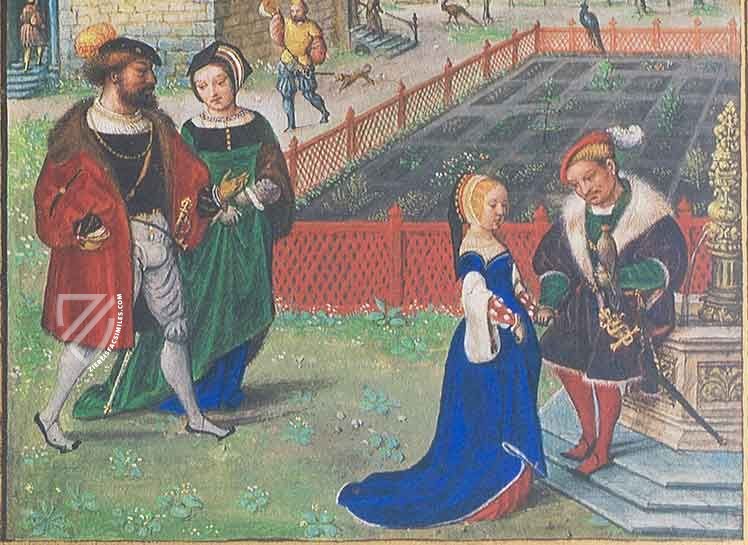
Simon Bening's Flemish Calendar
October: Crane Lifting Casks
Simon Bening revolutionized the art of painting landscapes and cityscapes with this work. He treated each labor of the month as an individual scene that was due the same attention as a panel painting. He thus created unbelievably realistic depictions of both people and objects, e.g. transporting barrels of either beer or white wine.
The massive, Roman-style crane in the background powered by four men walking on a giant wheel dominates the scene. Wandering eyes then take in the beautiful Gothic architecture of the city contrasted against the pale autumnal sky. In the foreground, a richly dressed nobleman wearing knee-high boots, red tunic, sword, and elaborate hat samples the goods offered him by a merchant in a fur-trimmed coat and red tights.
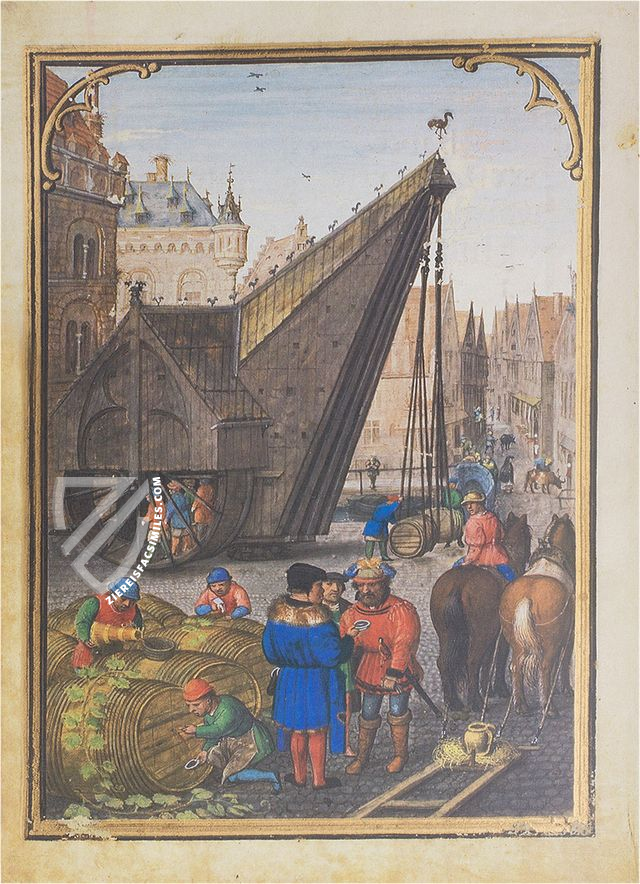
#1 Simon Benings Flämischer Kalender
Languages: English, French, German
(1,000€ - 3,000€)
- Treatises / Secular Books
- Apocalypses / Beatus
- Astronomy / Astrology
- Bestiaries
- Bibles / Gospels
- Chronicles / History / Law
- Geography / Maps
- Saints' Lives
- Islam / Oriental
- Judaism / Hebrew
- Single Leaf Collections
- Leonardo da Vinci
- Literature / Poetry
- Liturgical Manuscripts
- Medicine / Botany / Alchemy
- Music
- Mythology / Prophecies
- Psalters
- Other Religious Books
- Games / Hunting
- Private Devotion Books
- Other Genres
- Afghanistan
- Armenia
- Austria
- Belgium
- Belize
- Bosnia and Herzegovina
- China
- Colombia
- Costa Rica
- Croatia
- Cyprus
- Czech Republic
- Denmark
- Egypt
- El Salvador
- Ethiopia
- France
- Germany
- Greece
- Guatemala
- Honduras
- Hungary
- India
- Iran
- Iraq
- Israel
- Italy
- Japan
- Jordan
- Kazakhstan
- Kyrgyzstan
- Lebanon
- Liechtenstein
- Luxembourg
- Mexico
- Morocco
- Netherlands
- Palestine
- Panama
- Peru
- Poland
- Portugal
- Romania
- Russia
- Serbia
- Spain
- Sri Lanka
- Sweden
- Switzerland
- Syria
- Tajikistan
- Turkey
- Turkmenistan
- Ukraine
- United Kingdom
- United States
- Uzbekistan
- Vatican City
- A. Oosthoek, van Holkema & Warendorf
- Aboca Museum
- Ajuntament de Valencia
- Akademie Verlag
- Akademische Druck- u. Verlagsanstalt (ADEVA)
- Aldo Ausilio Editore - Bottega d’Erasmo
- Alecto Historical Editions
- Alkuin Verlag
- Almqvist & Wiksell
- Amilcare Pizzi
- Andreas & Andreas Verlagsbuchhandlung
- Archa 90
- Archiv Verlag
- Archivi Edizioni
- Arnold Verlag
- ARS
- Ars Magna
- ArtCodex
- AyN Ediciones
- Azimuth Editions
- Badenia Verlag
- Bärenreiter-Verlag
- Belser Verlag
- Belser Verlag / WK Wertkontor
- Benziger Verlag
- Bernardinum Wydawnictwo
- BiblioGemma
- Biblioteca Apostolica Vaticana (Vaticanstadt, Vaticanstadt)
- Bibliotheca Palatina Faksimile Verlag
- Bibliotheca Rara
- Boydell & Brewer
- Bramante Edizioni
- Bredius Genootschap
- Brepols Publishers
- British Library
- C. Weckesser
- Caixa Catalunya
- Canesi
- CAPSA, Ars Scriptoria
- Caratzas Brothers, Publishers
- Carus Verlag
- Casamassima Libri
- Centrum Cartographie Verlag GmbH
- Chavane Verlag
- Christian Brandstätter Verlag
- Circulo Cientifico
- Club Bibliófilo Versol
- Club du Livre
- CM Editores
- Collegium Graphicum
- Collezione Apocrifa Da Vinci
- Comissão Nacional para as Comemorações dos Descobrimentos Portugueses
- Coron Verlag
- Corvina
- CTHS
- D. S. Brewer
- Damon
- De Agostini/UTET
- De Nederlandsche Boekhandel
- De Schutter
- Deuschle & Stemmle
- Deutscher Verlag für Kunstwissenschaft
- DIAMM
- Droz
- E. Schreiber Graphische Kunstanstalten
- Ediciones Boreal
- Ediciones Grial
- Ediclube
- Edições Inapa
- Edilan
- Editalia
- Edition Deuschle
- Edition Georg Popp
- Edition Leipzig
- Edition Libri Illustri
- Editiones Reales Sitios S. L.
- Éditions de l'Oiseau Lyre
- Editions Medicina Rara
- Editorial Casariego
- Editorial Mintzoa
- Editrice Antenore
- Editrice Velar
- Edizioni Edison
- Egeria, S.L.
- Eikon Editores
- Electa
- Emery Walker Limited
- Enciclopèdia Catalana
- Eos-Verlag
- Ephesus Publishing
- Ernst Battenberg
- Eugrammia Press
- Extraordinary Editions
- Fackelverlag
- Facsimila Art & Edition
- Facsimile Editions Ltd.
- Facsimilia Art & Edition Ebert KG
- Faksimile Verlag
- Feuermann Verlag
- Folger Shakespeare Library
- Franco Cosimo Panini Editore
- Friedrich Wittig Verlag
- Fundación Hullera Vasco-Leonesa
- G. Braziller
- Gabriele Mazzotta Editore
- Gebr. Mann Verlag
- Gesellschaft für graphische Industrie
- Getty Research Institute
- Giovanni Domenico de Rossi
- Giunti Editore
- Graffiti
- Grafica European Center of Fine Arts
- Guido Pressler
- Guillermo Blazquez
- Gustav Kiepenheuer
- H. N. Abrams
- Harrassowitz
- Harvard University Press
- Helikon
- Hendrickson Publishers
- Henning Oppermann
- Herder Verlag
- Hes & De Graaf Publishers
- Hoepli
- Holbein-Verlag
- Houghton Library
- Hugo Schmidt Verlag
- Idion Verlag
- Il Bulino, edizioni d'arte
- ILte
- Imago
- Insel Verlag
- Insel-Verlag Anton Kippenberger
- Instituto de Estudios Altoaragoneses
- Instituto Nacional de Antropología e Historia
- Introligatornia Budnik Jerzy
- Istituto dell'Enciclopedia Italiana - Treccani
- Istituto Ellenico di Studi Bizantini e Postbizantini
- Istituto Geografico De Agostini
- Istituto Poligrafico e Zecca dello Stato
- Italarte Art Establishments
- Jan Thorbecke Verlag
- Johnson Reprint Corporation
- Josef Stocker
- Josef Stocker-Schmid
- Jugoslavija
- Karl W. Hiersemann
- Kasper Straube
- Kaydeda Ediciones
- Kindler Verlag / Coron Verlag
- Kodansha International Ltd.
- Konrad Kölbl Verlag
- Kurt Wolff Verlag
- La Liberia dello Stato
- La Linea Editrice
- La Meta Editore
- Lambert Schneider
- Landeskreditbank Baden-Württemberg
- Leo S. Olschki
- Les Incunables
- Liber Artis
- Library of Congress
- Libreria Musicale Italiana
- Lichtdruck
- Lito Immagine Editore
- Lumen Artis
- Lund Humphries
- M. Moleiro Editor
- Maison des Sciences de l'homme et de la société de Poitiers
- Manuscriptum
- Martinus Nijhoff
- Maruzen-Yushodo Co. Ltd.
- MASA
- Massada Publishers
- McGraw-Hill
- Metropolitan Museum of Art
- Militos
- Millennium Liber
- Müller & Schindler
- Nahar - Stavit
- Nahar and Steimatzky
- National Library of Wales
- Neri Pozza
- Nova Charta
- Oceanum Verlag
- Odeon
- Orbis Mediaevalis
- Orbis Pictus
- Österreichische Staatsdruckerei
- Oxford University Press
- Pageant Books
- Parzellers Buchverlag
- Patrimonio Ediciones
- Pattloch Verlag
- PIAF
- Pieper Verlag
- Plon-Nourrit et cie
- Poligrafiche Bolis
- Presses Universitaires de Strasbourg
- Prestel Verlag
- Princeton University Press
- Prisma Verlag
- Priuli & Verlucca, editori
- Pro Sport Verlag
- Propyläen Verlag
- Pytheas Books
- Quaternio Verlag Luzern
- Reales Sitios
- Recht-Verlag
- Reichert Verlag
- Reichsdruckerei
- Reprint Verlag
- Riehn & Reusch
- Roberto Vattori Editore
- Rosenkilde and Bagger
- Roxburghe Club
- Salerno Editrice
- Saltellus Press
- Sandoz
- Sarajevo Svjetlost
- Schöck ArtPrint Kft.
- Schulsinger Brothers
- Scolar Press
- Scrinium
- Scripta Maneant
- Scriptorium
- Shazar
- Siloé, arte y bibliofilia
- SISMEL - Edizioni del Galluzzo
- Sociedad Mexicana de Antropología
- Société des Bibliophiles & Iconophiles de Belgique
- Soncin Publishing
- Sorli Ediciones
- Stainer and Bell
- Studer
- Styria Verlag
- Sumptibus Pragopress
- Szegedi Tudomànyegyetem
- Taberna Libraria
- Tarshish Books
- Taschen
- Tempus Libri
- Testimonio Compañía Editorial
- Thames and Hudson
- The Clear Vue Publishing Partnership Limited
- The Facsimile Codex
- The Folio Society
- The Marquess of Normanby
- The Richard III and Yorkist History Trust
- Tip.Le.Co
- TouchArt
- TREC Publishing House
- TRI Publishing Co.
- Trident Editore
- Tuliba Collection
- Typis Regiae Officinae Polygraphicae
- Union Verlag Berlin
- Universidad de Granada
- University of California Press
- University of Chicago Press
- Urs Graf
- Vallecchi
- Van Wijnen
- VCH, Acta Humaniora
- VDI Verlag
- VEB Deutscher Verlag für Musik
- Verlag Anton Pustet / Andreas Verlag
- Verlag Bibliophile Drucke Josef Stocker
- Verlag der Münchner Drucke
- Verlag für Regionalgeschichte
- Verlag Styria
- Vicent Garcia Editores
- W. Turnowski Ltd.
- W. Turnowsky
- Waanders Printers
- Wiener Mechitharisten-Congregation (Wien, Österreich)
- Wissenschaftliche Buchgesellschaft
- Wissenschaftliche Verlagsgesellschaft
- Wydawnictwo Dolnoslaskie
- Xuntanza Editorial
- Zakład Narodowy
- Zollikofer AG





